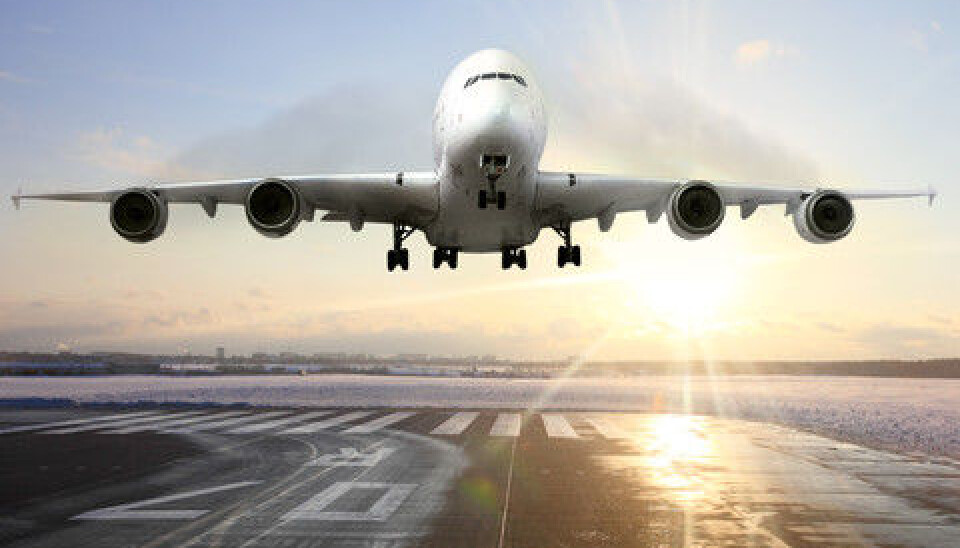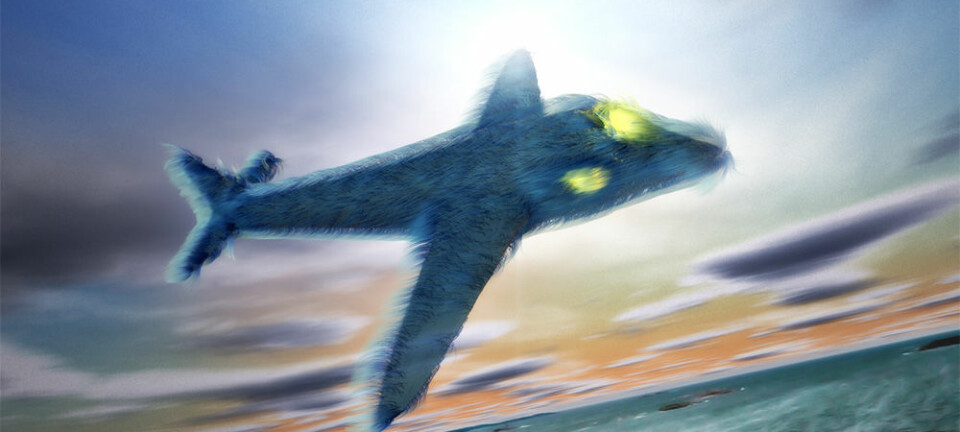An article from Norwegian SciTech News at NTNU

Safe landings on slippery runways
There’s a difference between slippery and slippery. So what’s the best way for airplane pilots to know how slippery it actually is on a runway before they land? A new computer model makes landing on slippery runways safer.
Denne artikkelen er over ti år gammel og kan inneholde utdatert informasjon.
Long before an airplane lowers its landing gear, the pilot needs information about runway conditions, such as how slippery the runway is, and how many meters of runway the airplane will need to stop.
All of these factors are all determined by friction, and ground personnel have to check conditions continually so planes can land safely.
Runway friction
Alex Klein-Paste, an associate professor at the Department of Civil and Transport Engineering at the Norwegian University of Science and Technology (NTNU), explains that before an aircraft can land safely onto a runway under winter conditions, the pilot must know how much friction there will be between the landing wheels and the runway.
“This assessment is conducted by ground personnel, who use a five-point scale that goes from ‘poor’ to ‘good’. These kinds of assessments rely on friction measurements, which help us make the right decisions,” he says.

“But friction measurements are not always able to predict the actual amount of friction that the airplane will need when it lands.”
These kinds of runway condition notifications from the ground to the pilot are called SNOWTAM (Snow Warning to Airmen). The more precise these notifications are, the easier it is for an aircraft to land without sliding. Now, new research conducted at NTNU is helping to make landings safer on slippery runways.
Thorough measurements
In 2003, Klein-Paste started as a PhD candidate at NTNU to study the measurement of friction on runways covered with snow and ice. Now, 10 years later, he has developed an evaluation model in collaboration with Avinor that is a supplement to normal friction measurements. Avinor is a company administered by the Norwegian Ministry of Transport and Communications, and is responsible for planning, developing and maintaining Norway’s airport network
The model is based on visual observations from runway inspectors. They check both the type and depth of snow and ice, as well how much of the runway is covered. They also describe whether or not they have used sand and chemicals to improve landing conditions. Meteorological data such as air, runway and dew point temperatures are also factored into the model.
When all this is put together, the model calculates how slippery the runway will be, using a scale from good to poor.
The results are displayed in what is called an Integrated Runway Information System (IRIS), which is a tool for ground personnel at airports.
They can now compare their ratings with the computer model, and can use the comparison to adjust their estimates either up or down.
Modifying the model
IRIS is a system that warns airport personnel about changes in both weather and runway conditions. Today, fifteen airports in Norway have adopted the system.
Tor-Børre Langedahl, Director of Avinor’s Resource Center, says the purpose of IRIS is to increase the level of safety at Avinor airports, and to keep the company on the cutting edge in both runway maintenance and more accurate reporting from the ground to the aircraft.
“We have conducted analyses of landings at Gardermoen (Oslo) and Tromsø Airports, and our measurements show that the model is better at predicting how slippery the runways will be as compared to friction measurements without the additional calculations,” he says. “We are working further to refine the model so that it can provide more precise measures at all airports in Norway.”
Avinor is currently working to offer IRIS to airports outside of the Avinor system.
--------------------------
Read the Norwegian version of this article at forskning.no
Translated by: Nancy Bazilchuk
































